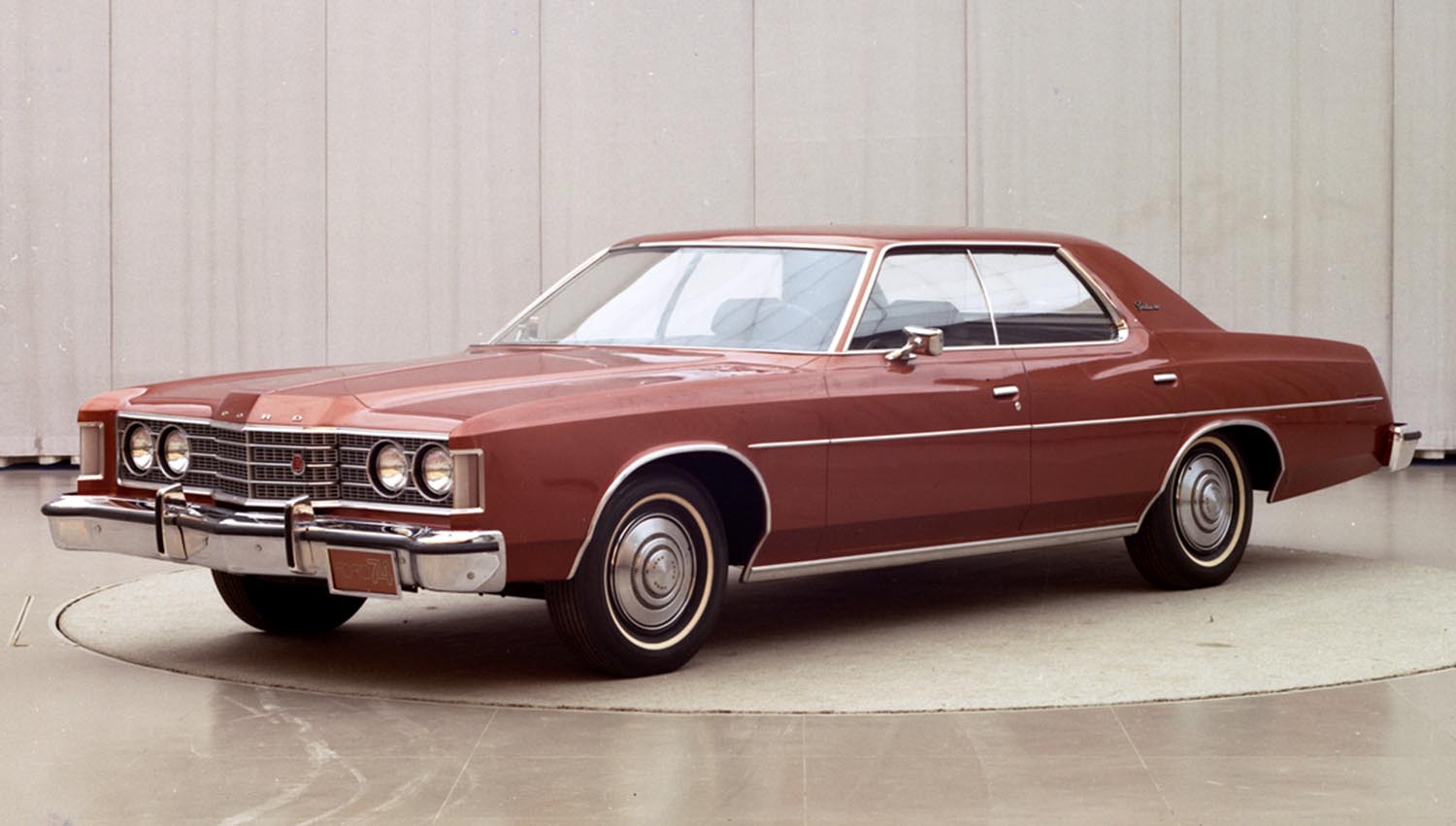
The 1974 Ford Galaxie 500 four-door hardtop is an auto icon that represented the closing chapter for an esteemed nameplate. It was the final year for the full-size Galaxie, a car that had graced American roads since 1959. This last edition serves as a snapshot of American automotive priorities. The model came just before an industry shift toward smaller, more fuel-efficient designs. Therefore, understanding this final year requires looking at its long and complex heritage.
A Full-Size Lineage Rooted in the Space Age
The Galaxie Nameplate’s Celestial Start
The original Galaxie name, introduced in 1959, referenced the excitement of the Space Race. This immediately positioned the car as futuristic and cutting-edge. It initially served as the top-tier trim level for the full-size Ford line. Later the Galaxie became a standalone, high-volume model, often competing directly with the Chevrolet Impala. Consequently, the Galaxie’s success was vital to Ford’s market dominance for over a decade.
Evolution Through Four Generations
From its origins, the Galaxie went through four major generations of styling and engineering. The name was progressively applied to more models over time. By 1962, Ford’s entire full-size lineup was badged as the Galaxie. This strategy helped establish its reputation for offering a dependable, spacious car. Eventually, the more luxurious LTD trim began to overshadow the Galaxie name.
The Final Year: The 1974 Ford Galaxie 500 Hardtop
Design and Structural Heritage
The 1974 Ford Galaxie 500 four-door hardtop belonged to the fourth and final generation, which began in 1969. This generation introduced a longer wheelbase and a completely new chassis design. The hardtop body style lacks a structural pillar between the front and rear doors. This created a wide-open, airy cabin when all the windows were down. Furthermore, the 1974 design embraced the long, sculpted body lines typical of the era.
Comfort as a Core Selling Point
Throughout its history, the Galaxie 500 was designed with comfort and smooth cruising in mind. Plush bench seating could easily accommodate up to six passengers for long journeys. The full coil suspension system was tuned for a soft, isolating ride quality. Importantly, power steering and power brakes were standard features to manage the car’s considerable size.
Engine Power and Performance Specifications
The Heart of the Land Yacht
The 1974 Ford Galaxie 500 was offered with several large V8 engine options. Power was generated by robust units like the 400 cubic-inch (6.6 L) V8. This engine was paired with the C6 SelectShift Cruise-O-Matic three-speed automatic transmission. Typical for the time, performance focused on torque and smooth power delivery rather than outright speed. The V8s provided ample horsepower, often ranging between 150 and 220, to move the full-size sedan effortlessly. Although not a muscle car, the engine gave the driver plenty of passing power on the highway.
A Fitting End to an Automotive Era
Consolidation and Legacy
The 1974 Ford Galaxie 500 marked the end of the Galaxie nameplate. The reason for its discontinuance was Ford’s decision to consolidate its full-size offerings. Consequently, the Galaxie was merged into the popular and more upscale LTD line for the 1975 model year. This final model holds a special spot as the last pure Galaxie. It serves as a classic reminder of when American cars truly embraced their substantial scale.
An Auto Icon’s Place in History
Ultimately, the 1974 Ford Galaxie 500 four-door hardtop is a classic American car. It stands as a powerful testament to the era of large, comfortable cruising vehicles. It offered luxury and reliability to families and travelers across the United States. Its heritage is cemented as one of the most recognizable and enduring full-size Fords ever produced.
Disclaimer: Content on this site is for informational purposes only. Vehicle specs, pricing, and availability may change. Always verify details with official sources before making decisions. Opinions are those of the authors.
Source: Ford Heritage Vault
